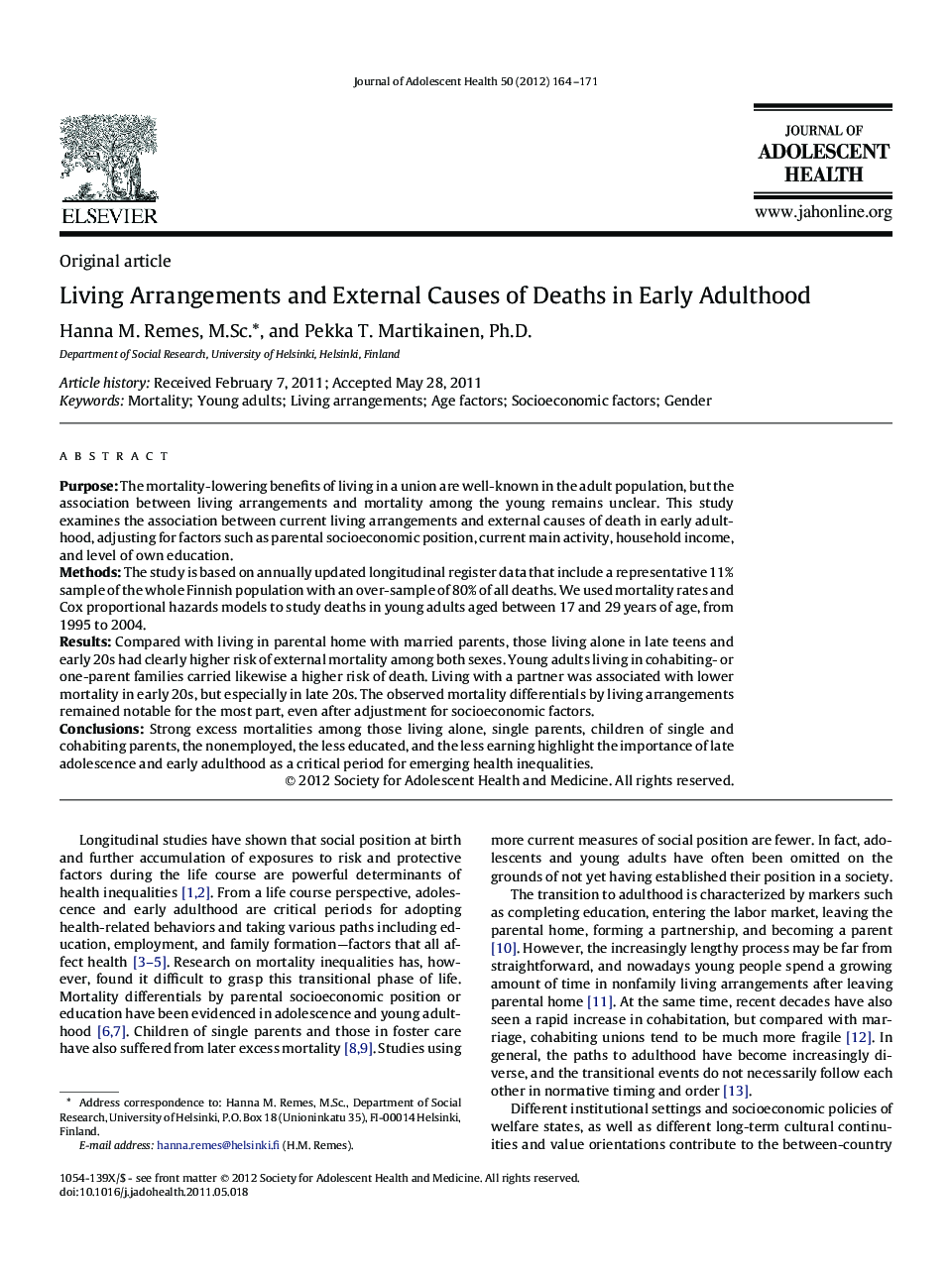| کد مقاله | کد نشریه | سال انتشار | مقاله انگلیسی | نسخه تمام متن |
|---|---|---|---|---|
| 1078795 | 950475 | 2012 | 8 صفحه PDF | دانلود رایگان |

PurposeThe mortality-lowering benefits of living in a union are well-known in the adult population, but the association between living arrangements and mortality among the young remains unclear. This study examines the association between current living arrangements and external causes of death in early adulthood, adjusting for factors such as parental socioeconomic position, current main activity, household income, and level of own education.MethodsThe study is based on annually updated longitudinal register data that include a representative 11% sample of the whole Finnish population with an over-sample of 80% of all deaths. We used mortality rates and Cox proportional hazards models to study deaths in young adults aged between 17 and 29 years of age, from 1995 to 2004.ResultsCompared with living in parental home with married parents, those living alone in late teens and early 20s had clearly higher risk of external mortality among both sexes. Young adults living in cohabiting- or one-parent families carried likewise a higher risk of death. Living with a partner was associated with lower mortality in early 20s, but especially in late 20s. The observed mortality differentials by living arrangements remained notable for the most part, even after adjustment for socioeconomic factors.ConclusionsStrong excess mortalities among those living alone, single parents, children of single and cohabiting parents, the nonemployed, the less educated, and the less earning highlight the importance of late adolescence and early adulthood as a critical period for emerging health inequalities.
Journal: Journal of Adolescent Health - Volume 50, Issue 2, February 2012, Pages 164–171